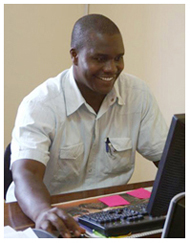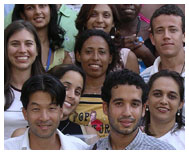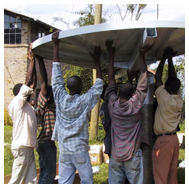GLOBAL COLLABORATION
Accurate information saves lives. From the data gathered on the ground to the results generated in the laboratory, researchers must be able to report their findings and study the work of others—the free flow of information is essential, whenever and wherever it is needed.
In this way, people can share resources as well as ideas, passing on training and skills to expand the network of experts at work on global health. Teams around the world are engaged in this exchange, working together to identify problems and test solutions.
Building the Team
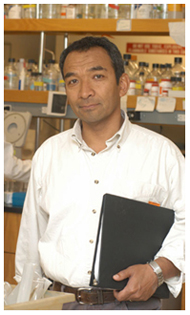 Dr. Lee W. Riley, a director of the Fogarty Program in International Training and Research in Global Infectious Diseases, National Institutes of Health, ca. 2006
Dr. Lee W. Riley, a director of the Fogarty Program in International Training and Research in Global Infectious Diseases, National Institutes of Health, ca. 2006Courtesy Lee W. Riley, M.D.
Dr. Lee W. Riley has trained Brazilian researchers to investigate major diseases affecting the country's poorest communities, including bacterial meningitis and multidrug-resistant tuberculosis.
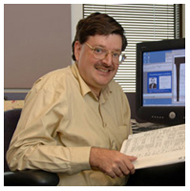 Scientist Dr. Alejandro Schäffer, National Center for Biotechnology Information (NCBI), National Library of Medicine, National Institutes of Health, 2007
Scientist Dr. Alejandro Schäffer, National Center for Biotechnology Information (NCBI), National Library of Medicine, National Institutes of Health, 2007In the 1990s, Dr. Alejandro Schäffer and his collaborators developed FASTLINK, a computer program that can locate genes on the human chromosome that cause disease.
In 2006, FASTLINK was used to identify genes that lead to neutropenia, a rare immunodeficiency in which lack of a certain type of cell (neutrophils) makes it difficult for the patients to
fight bacterial infection. The successful project was the result of an international collaboration led by Professor Christoph Klein from the Medical School of Hanover, Germany and Professor
Bodo Grimbacher, who was then at the University of Freiburg. Dr. Grimbacher had a fellowship at the National Institutes of Health in 1997 and has been collaborating with Dr. Schäffer since
then.
Dr. Sungano Mharakurwa, scientific director of the Malaria Institute at Macha, Zambia has played an integral role in the international effort to map the genetic structure
of malaria parasites. He led a team of field workers who trapped mosquitoes and studied the malaria parasites they host.
In 2006, with a team of scientists at the Johns Hopkins Bloomberg School of Public Health, Dr. Mharakurwa helped develop a new test for detecting the malaria parasite in urine
and saliva. This test is easier to perform than the standard blood test, which can only be conducted by trained health workers, and eliminates the use of needles. The test is also easier to use with young
children, who are especially at risk for malaria.
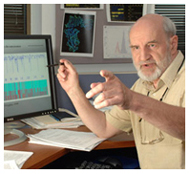 Senior Investigator Dr. John Wootton, National Center for Biotechnology Information (NCBI), National Library of Medicine, National Institutes of Health, 2007
Senior Investigator Dr. John Wootton, National Center for Biotechnology Information (NCBI), National Library of Medicine, National Institutes of Health, 2007As part of a team of researchers investigating parasites with resistance to common malaria drugs, Dr. John Wootton helped to identify the genetic markers that confer resistance to chloroquinine. In 1992, malaria caused by the parasite
Plasmodium falciparum began to spread in Peru for the first time, introduced by woodcutters who had migrated to the area. In 1997, a team of researchers from Peru and the United States traveled to Padre Cocha, a village in the Peruvian Amazon, to collect samples
of the parasite for closer study. Dr. Wootton and a team of researchers mapped the genetic structure of the parasite to determine which drugs would be most effective against it.
In the favelas (slums) of
Pau da Lima, a team is studying leptospirosis, a disease transmitted by rat urine. Even if they receive treatment, the young men who are most affected by this disease become seriously ill and some die. The research team showed that the best strategy
to tackle the epidemics that occur every year in the rainy season is to prevent the disease by providing piped water and closing off open sewers. Previously a trainee in the program, Dr. Albert Ko returned to Brazil and has taught more than fifty local
staff to continue this work.
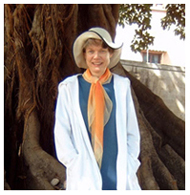 Julia Royall, chief of International Programs at the National Library of Medicine, in Maputo, Mozambique, 2003
Julia Royall, chief of International Programs at the National Library of Medicine, in Maputo, Mozambique, 2003Courtesy Julia Royall, photograph by Roger LeCompte
The Multilateral Initiative on Malaria (MIM) is an international alliance of organizations and individuals engaged in research on malaria. MIM was launched in 1997 following the first
Pan-African Malaria Conference, in Dakar, Senegal, where prominent malaria scientists, representatives from the World Health Organization (WHO), and funding organizations from all over the world identified the
priorities for future malaria research. Since then, more than forty projects have been undertaken to support research by African scientists and to train young researchers. One of the most successful contributions
has been the launch of fast and reliable Internet connectivity all across Africa to provide access to current medical literature online. Julia Royall led this initiative as director of the MIM Communications Network.
Preparing for Challenges
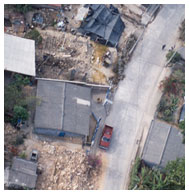 Damage caused by earthquakes on Las Delicias Colony, Santa Tecla, El Salvador, 2001
Damage caused by earthquakes on Las Delicias Colony, Santa Tecla, El Salvador, 2001Courtesy Jorge Jenkins, M.D.
The Central American region is particularly vulnerable to earthquakes because it is located in the path of large-scale meteorological systems and on the fault lines of tectonic plates. Working with the Pan American Health Organization,
the United Nations International Strategy for Disaster Reduction, and the Regional Disaster Information Center for Latin America and the Caribbean, a team at the National Library of Medicine developed the Central American Disaster Information Network (CANDHI) to
create a network of information resources to help people in the region prepare for all types of natural disasters.
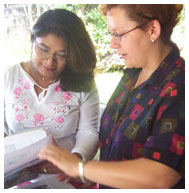 Scanning documents to upload to the Web site, Disaster Protection Center (CEPRODE) in San Salvador, El Salvador, 2004
Scanning documents to upload to the Web site, Disaster Protection Center (CEPRODE) in San Salvador, El Salvador, 2004Courtesy Karla Patricia Pérez/CEPRODE
CANDHI launched its first disaster response centers in Honduras, Nicaragua and El Salvador. In 2005, sites in Guatemala, Costa Rica, and Panama were added to the network. They provide the technology needed to access databases, publications,
and online resources on disaster preparedness, and to connect to a Web site that provides news, maps, local weather updates, and alerts. Information specialists also offer training to health care professionals and policy makers, to teach them how to search for these
resources and download crucial information.
Learning from History
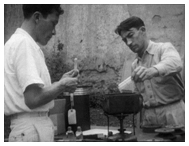 Health workers prepare vaccinations, film still from The Silent War: Colombia's Fight against Yellow Fever, 1943
Health workers prepare vaccinations, film still from The Silent War: Colombia's Fight against Yellow Fever, 1943Courtesy National Library of Medicine
When an epidemic of yellow fever broke out in Colombia during World War II the government launched a national vaccination campaign. The film The Silent War documents the efforts of teams of health workers to visit every village in the country.
It is one of more than five thousand films and videos available for research in the History of Medicine Division of the National Library of Medicine. These films offer a glimpse into the challenges and triumphs of the past, as well as lessons for the future.
This poster, produced in China in the early 1960s, invites a diverse group of citizens to join a national campaign to control the pests that carry disease-rats, flies, sparrows and mosquitoes. The Chinese Public Health collection at the
National Library of Medicine includes posters, lantern slides, health newspapers, paintings, jigsaw puzzles, books and journals produced from early twentieth century on. This collection of seven thousand Chinese items provides a rich source of information on Chinese
public health education and propaganda movements over the last one hundred years.
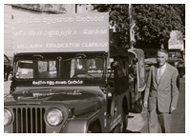 Dr. Eugene Paul Campbell, Institute of Inter-American Affairs, conducting fieldwork in Malaysia, ca. 1950
Dr. Eugene Paul Campbell, Institute of Inter-American Affairs, conducting fieldwork in Malaysia, ca. 1950Courtesy National Library of Medicine
Eugene P. Campbell traveled the world as a public health physician and led major campaigns against disease in Latin America and India. His journals, photographs, letters, and reports of his work from the 1930s to the 1970s are held by the
Archives and Modern Manuscripts Program at the National Library of Medicine. The program maintains more than ten thousand feet of archives and manuscripts. Researchers can study the lives and work of physicians, major medical organizations and health care institutions,
scientific breakthroughs, and international health policies
